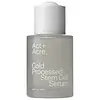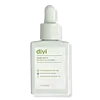What's inside
What's inside
 Key Ingredients
Key Ingredients

 Benefits
Benefits

 Concerns
Concerns

No concerns
 Ingredients Side-by-side
Ingredients Side-by-side

Water
Skin ConditioningGlycerin
HumectantButylene Glycol
HumectantAloe Barbadensis Leaf Juice
Skin ConditioningPentylene Glycol
Skin ConditioningPropanediol
SolventXanthan Gum
EmulsifyingGlucosamine Hcl
Caprylyl Glycol
EmollientGlycereth-26
HumectantPisum Sativum Extract
Skin ConditioningMalus Domestica Fruit Cell Culture Extract
Skin ConditioningCarbomer
Emulsion StabilisingBambusa Vulgaris Leaf/Stem Extract
HumectantEthylhexylglycerin
Skin ConditioningSodium Hyaluronate
HumectantTetrasodium Glutamate Diacetate
Phenoxyethanol
PreservativeQuercus Petraea Fruit Extract
Skin ConditioningCollagen
MoisturisingLecithin
EmollientLeuconostoc/Radish Root Ferment Filtrate
AntimicrobialSodium Benzoate
MaskingSodium Hydroxide
BufferingPotassium Sorbate
PreservativeSodium Glycolate
BufferingSodium Formate
BufferingCitric Acid
BufferingWater, Glycerin, Butylene Glycol, Aloe Barbadensis Leaf Juice, Pentylene Glycol, Propanediol, Xanthan Gum, Glucosamine Hcl, Caprylyl Glycol, Glycereth-26, Pisum Sativum Extract, Malus Domestica Fruit Cell Culture Extract, Carbomer, Bambusa Vulgaris Leaf/Stem Extract, Ethylhexylglycerin, Sodium Hyaluronate, Tetrasodium Glutamate Diacetate, Phenoxyethanol, Quercus Petraea Fruit Extract, Collagen, Lecithin, Leuconostoc/Radish Root Ferment Filtrate, Sodium Benzoate, Sodium Hydroxide, Potassium Sorbate, Sodium Glycolate, Sodium Formate, Citric Acid
Water
Skin ConditioningGlycerin
HumectantMelaleuca Alternifolia Leaf Oil
AntioxidantAcetyl Tetrapeptide-3
Skin ProtectingCopper Tripeptide-1
Skin ConditioningCaffeine
Skin ConditioningSodium PCA
HumectantSodium Lactate
BufferingArginine
MaskingHyaluronic Acid
HumectantAspartic Acid
MaskingPCA
HumectantBiotin
AntiseborrhoeicGlycine
BufferingAlanine
MaskingMentha Piperita Oil
MaskingEucalyptus Globulus Oil
Serine
MaskingMenthol
MaskingTocopherol
AntioxidantValine
MaskingProline
Skin ConditioningThreonine
Isoleucine
Skin ConditioningRosmarinus Officinalis Leaf Extract
AntimicrobialCamellia Sinensis Leaf Extract
AntimicrobialHistidine
HumectantPhenylalanine
MaskingCopper Gluconate
Skin ConditioningAscorbic Acid
AntioxidantPhenylpropanol
MaskingEthylhexylglycerin
Skin ConditioningWater, Glycerin, Melaleuca Alternifolia Leaf Oil, Acetyl Tetrapeptide-3, Copper Tripeptide-1, Caffeine, Sodium PCA, Sodium Lactate, Arginine, Hyaluronic Acid, Aspartic Acid, PCA, Biotin, Glycine, Alanine, Mentha Piperita Oil, Eucalyptus Globulus Oil, Serine, Menthol, Tocopherol, Valine, Proline, Threonine, Isoleucine, Rosmarinus Officinalis Leaf Extract, Camellia Sinensis Leaf Extract, Histidine, Phenylalanine, Copper Gluconate, Ascorbic Acid, Phenylpropanol, Ethylhexylglycerin
Ingredients Explained
These ingredients are found in both products.
Ingredients higher up in an ingredient list are typically present in a larger amount.
Ethylhexylglycerin (we can't pronounce this either) is commonly used as a preservative and skin softener. It is derived from glyceryl.
You might see Ethylhexylglycerin often paired with other preservatives such as phenoxyethanol. Ethylhexylglycerin has been found to increase the effectiveness of these other preservatives.
Glycerin is already naturally found in your skin. It helps moisturize and protect your skin.
A study from 2016 found glycerin to be more effective as a humectant than AHAs and hyaluronic acid.
As a humectant, it helps the skin stay hydrated by pulling moisture to your skin. The low molecular weight of glycerin allows it to pull moisture into the deeper layers of your skin.
Hydrated skin improves your skin barrier; Your skin barrier helps protect against irritants and bacteria.
Glycerin has also been found to have antimicrobial and antiviral properties. Due to these properties, glycerin is often used in wound and burn treatments.
In cosmetics, glycerin is usually derived from plants such as soybean or palm. However, it can also be sourced from animals, such as tallow or animal fat.
This ingredient is organic, colorless, odorless, and non-toxic.
Glycerin is the name for this ingredient in American English. British English uses Glycerol/Glycerine.
Learn more about GlycerinWater. It's the most common cosmetic ingredient of all. You'll usually see it at the top of ingredient lists, meaning that it makes up the largest part of the product.
So why is it so popular? Water most often acts as a solvent - this means that it helps dissolve other ingredients into the formulation.
You'll also recognize water as that liquid we all need to stay alive. If you see this, drink a glass of water. Stay hydrated!
Learn more about Water